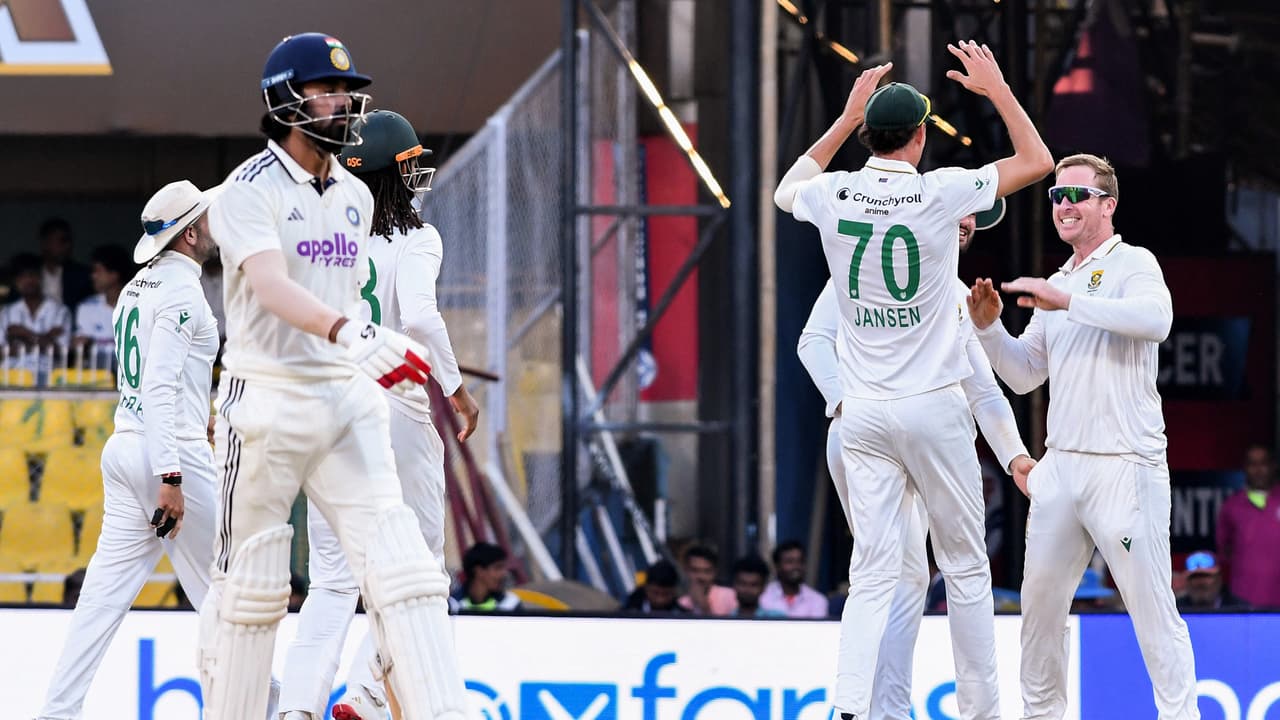After a home Test whitewash vs South Africa, India’s red-ball game is under scrutiny. Poor batting vs spin, an unsettled No. 3, and weak selections were exposed. Five key areas must be fixed to rebuild the Test side.
Team India suffered a humiliating Test series whitewash at the hands of South Africa following the second and final match of the series at Barsapara Cricket Stadium in Guwahati on Wednesday, November 26. After losing the Kolkata Test by 30 runs, India suffered a massive 408-run defeat in the Guwahati Test.
With a mammoth 549-run target, Team India succumbed to pressure as they were bundled out for 140 on the final day of the second Test in Guwahati, resulting in a Test series whitewash. This was the second consecutive red-ball series whitewash at home, after having been defeated 0-3 by New Zealand last year.
Scroll to load tweet…
On that note, let’s take a look at key issues India needs to fix following another Test series whitewash at home.
1. Improve Batting Technique against Spin
One of the key issues Team India must fix after the Test series whitewash at the hands of South Africa is improving batting technique against spin or in spin conditions. The recently concluded Test series exposed India’s frailties n shot selection, footwork, and temperament, especially on a surface that offered turn and variable bounce. The hosts’ top order repeatedly failed to build partnerships, highlighting the need for more disciplined play and a better technique against quality spin attacks.
Having bundled out for below 200 thrice in four innings of the two-match Test series on spinning tracks in Kolkata and Guwahati, India will have to reassess their batting approach, strengthen their defensive game, and prepare with greater intent to counter sustained spin pressure.
2. Identify No.3 Batter for Long-Term
One of the key issues for Team India for over a year has been identifying a reliable No.3 batter. Over the last couple of years, India has had five different batters, including Shubman Gill, KL Rahul, Devdutt Padikkal, Sai Sudharsan, and Washington Sundar, batting at the No.3 position, but could not zero in on a consistent, long-term option. Following Cheteshwar Pujara’s retirement from Tests, Team India management is yet to find a long-term No.3 batter.
Following the Test series whitewash, India needs to identify an ideal No.3 batter and give him a long run rather than rotating the players frequently, which disrupts the batting order and prevents the batter from settling into the role with confidence and rhythm. The No.3 is a crucial batting position, which was once occupied by Rahul Dravid before Cheteshwar Pujara took over.
3. Bring in Red-Ball Specialist Batters
Picking players for the Test side based on their performance in the IPL or any T20 tournaments has not always translated into red-ball success. Team India management and selectors need to invest in red-ball specialists batters who can perform in longer formats, handle pressure over extended sessions, and adapt to varying pitch conditions. Following the Test series whitewash, Team India management and selectors were criticised for their reliance on white-ball suited players rather than picking players suited for red-ball cricket.
Indian domestic red-ball cricket, especially the Ranji Trophy, provides a platform to groom o identify and groom players with the temperament, technique, and patience required for Test cricket, allowing the selectors to build a squad capable of handling pressure and performing consistently in longer formats.
4. Play According to the Match Situation
One of the key reasons behind India’s Test series whitewash against South Africa was their inability to adapt to batting and bowling strategies to the evolving conditions. Throughout the Test series, Indian batters played too defensively, failing to build partnerships or handle pressure on turning tracks. Failure to assess the pitch conditions and a lack of awareness of the match situation resulted in a Test series loss to South Africa.
Therefore, it is essential for the batters to develop situational awareness, adjust their approach according to pitch conditions, and match context, especially on a track that offers variable bounce and turn, where patience, footwork, and shot selection are crucial to build long innings and withstand sustained pressure against quality spin attacks.
5. A Specialist Batter at No.6 Position
Another key issue Team India needs to address after the Test series defeat to South Africa is having a specialist batter at the No.6 spot rather than a “part‑time” batter or a lower‑order all‑rounder. The middle-order, especially No.6, should be occupied by someone capable of absorbing the pressure and anchoring the innings in crucial situations. During the Test series, the collapse of the middle order exposed the danger of not having a genuine batter at No.6.
Putting a dedicated batter at No.6, with a proper red-ball temperament, defence, and ability to rotate the strike, would give India depth and some security as the sixth pillar of the batting, capable of grinding out runs, helping build or rescue innings, and withstanding pressure on challenging wickets.
